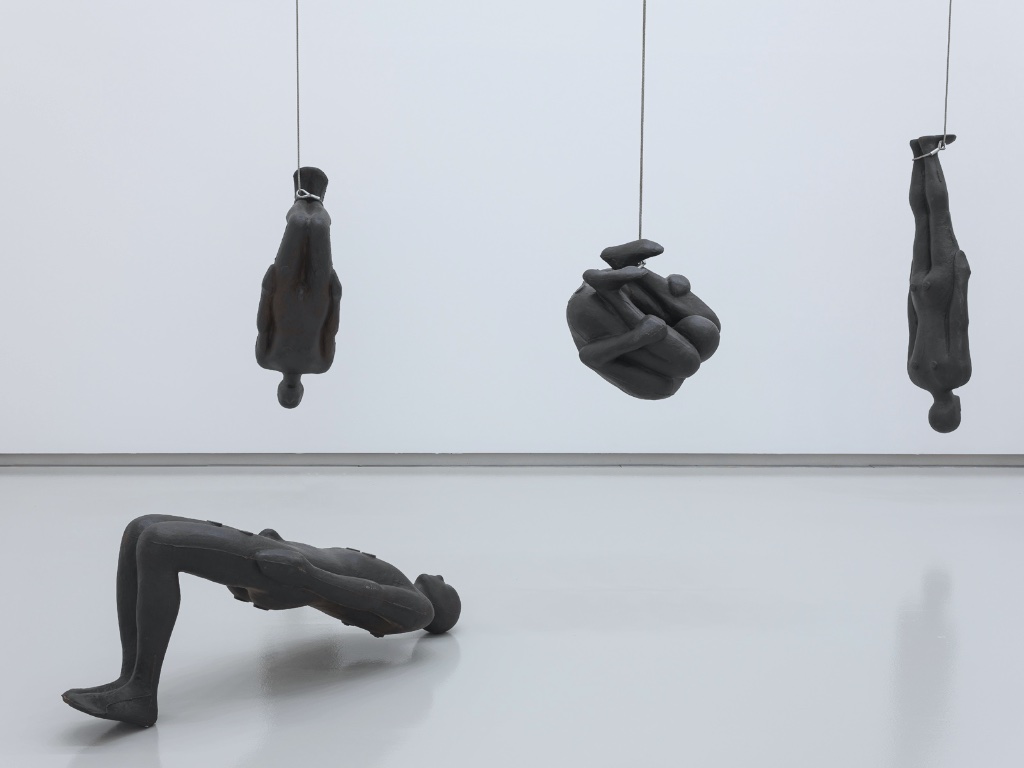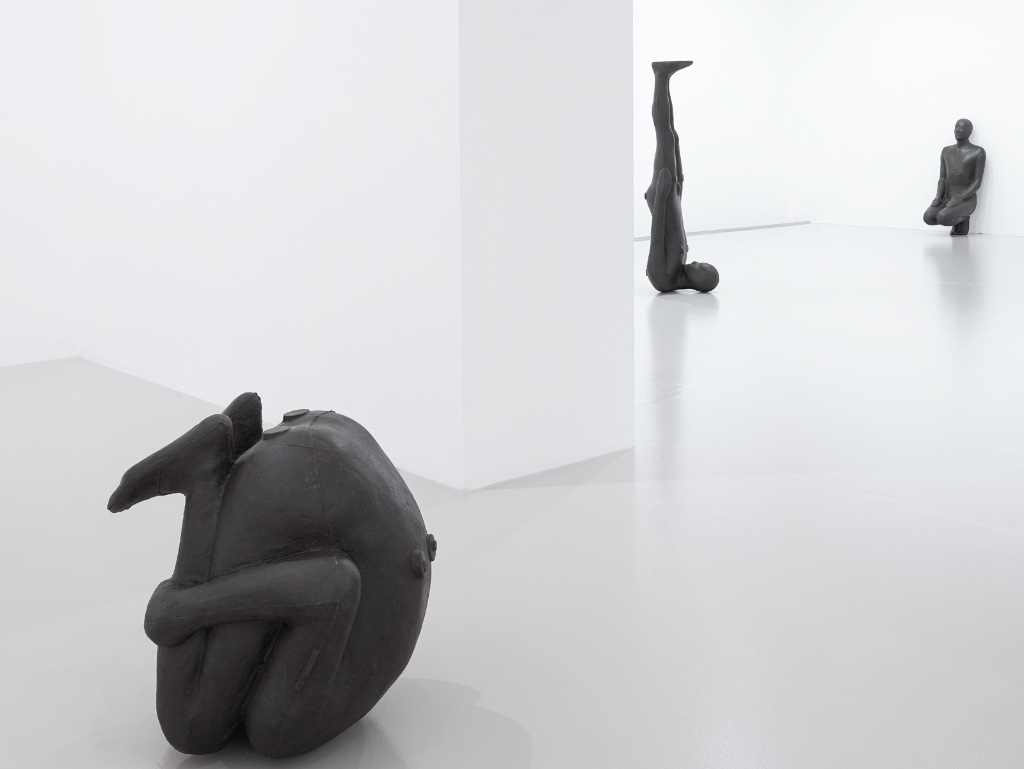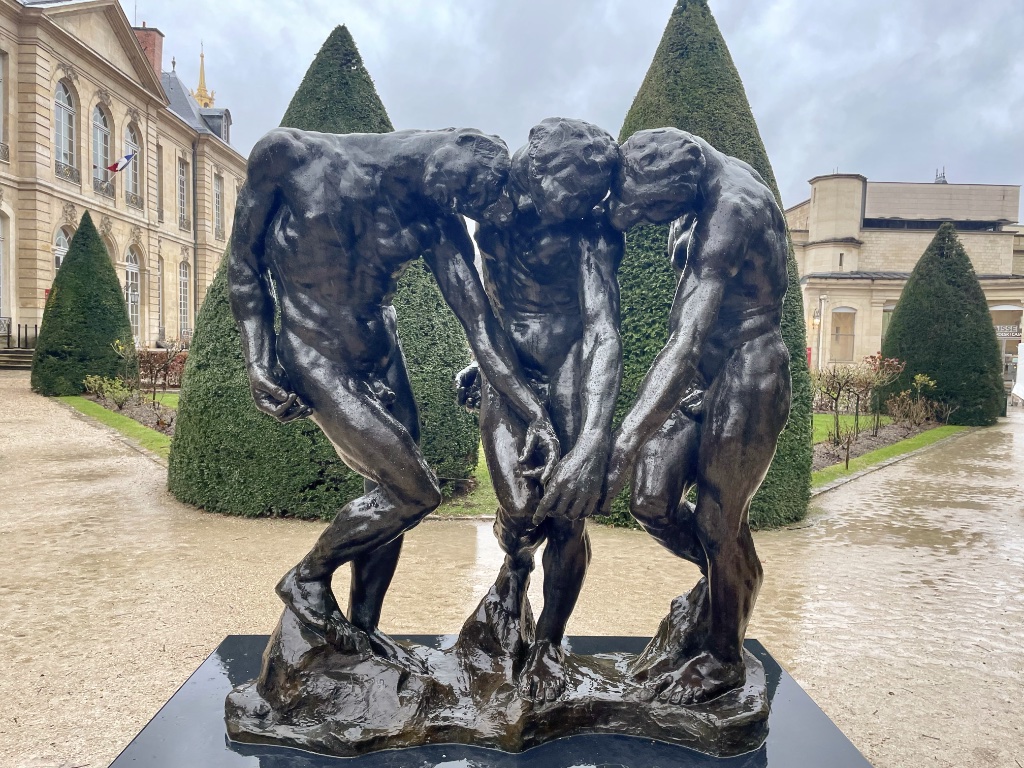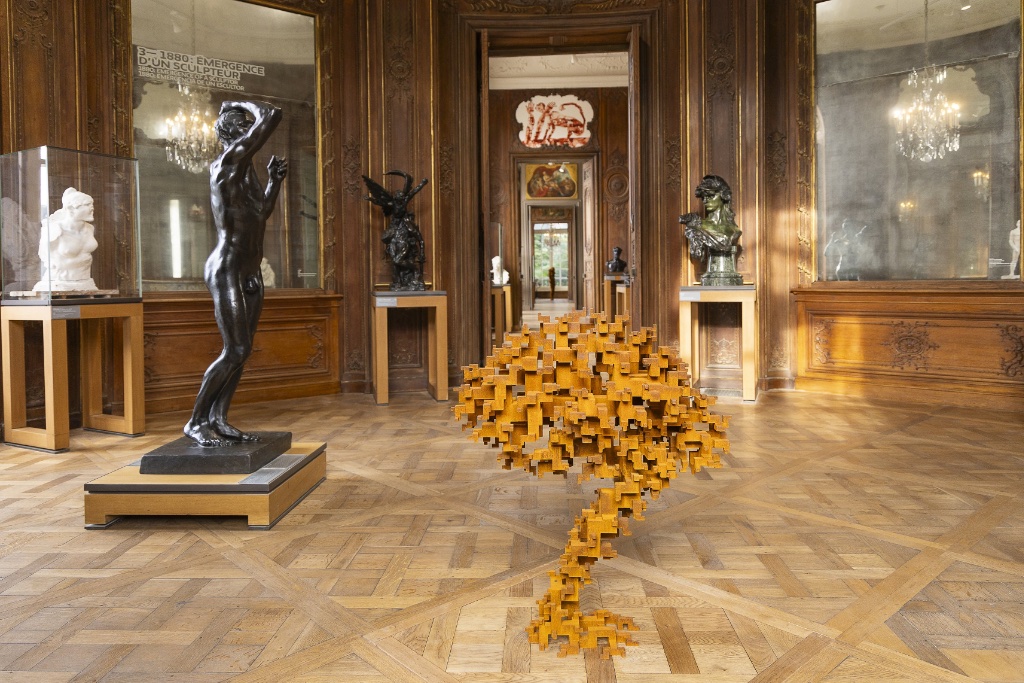
It seems like such a felicitous pairing that one wonders why British sculptor Anthony Gormley has never before made an appearance at the Musée Rodin in Paris. The two have finally been brought together there for the exhibition “Critical Mass,” a great reason to revisit this august museum, if one were needed.

Gormley famously uses a mold of his own naked body as the basis for most of his works. The show begins in the museum’s modern temporary exhibition space with an installation Gormley created in 1995: “Critical Mass II,” made up of 60 life-sized cast-iron statues of his naked self in 12 different unnatural, painful-looking poses. Some are sitting up straight with legs stretched out at a perfect 90-degree angle, for instance, while others stand rod-straight with their heads bent at a 90-degree angle. Still others are curled up in the fetal position. Arranged in various configurations – hanging from the ceiling, for example, turned upside down or piled on top of each other like so many discarded corpses – they startle the visitor anew in each arrangement. There are no wall texts or labels to explain things, just the dark bodies against stark white walls.
Outside, the show continues in the courtyard and garden, where the same statues finally encounter the sculptures of Rodin. A line of Gormley’s men, starting in a standing position and gradually bending, tumble (the statue in the fetal position) toward the tortured figures in the bronze cast of Rodin’s famous “The Gates of Hell,” which stands against the far wall of the garden. (The last Gormley statue can only be seen if you look up and to the left.)

On the way, Gormley’s statues pass by a separate, life-sized bronze cast of “The Three Shades” (“Les Ombres”), the three identical nude male figures that top “The Gates of Hell.” Here’s where Gormley’s postmodernity clashes wonderfully with Rodin’s modernity. The former’s sculptures are expressionless, emotionless and perfectly still and rigid, with smooth bodies – the strong effect they create comes from their placement in space – while Rodin strives mightily to express emotion and dynamic movement in his works. The heavily muscled “The Three Shades” hang their heads in desolation as they point to the inscription “Abandon hope all ye who enter here,” taken from Dante’s Inferno (the inspiration for “The Gates of Hell”). The stillness and rigidity of Gormley’s statues, strangely enough, are more eerily effective than the in-your-face anguish and emotionalism of Rodin’s figures.

Inside the museum, you are back in Rodin’s world, the marvelous 18th-century Hôtel Biron, where he and many other artists once lived and worked. As you wander through the rooms full of various versions of his works, those of Camille Claudel and Rodin’s own art collection, you will be pleasantly surprised by an occasional sculpture by Gormley from other projects made during his 40-year career, cleverly juxtaposed with works by Rodin. Half of the plaster mold for one of Gormley’s statues of his own body (this one in a kneeling position), for example, stands next to Rodin’s mold of “Balzac’s Dressing Gown,” part of his extensive project for a portrait of the great writer. In the same room, small studies for the Balzac statue are joined by “Iron Model for Blackwood Stack,” a head made of slabs of iron, like a 3D puzzle with a prominent nose.
Keep your eyes open; some of Gormley’s works are almost invisible among Rodin’s, like “Cleave Net,” a wire sculpture of a body hiding in a corner, its face to the wall. And don’t miss the long gallery lined with Gormley’s sketchbooks, full of his many explorations of the human form and its place in the landscape.
Being human is hard. That’s the impression you get from looking at the statues of both artists, compensated for by the sheer power of their works. While Rodin indulges in exaggerated naturalism, Gormley creates figures that are realistic but unnaturally posed. What they share is a potent obsession with exploring the ins and outs of the human form.
See our list of Current & Upcoming Exhibitions to find out what else is happening in the Paris art world.
Favorite